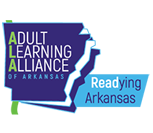
Last week we talked about teaching professionalism! This week we are building off our previous lesson of professionalism to engage students in writing. Writing is a great way to incorporate vocabulary and grammar all while building skills students will use day to day.
In today’s digital age, mastering the art of writing professional emails is essential for success in any field. Whether your student is corresponding with colleagues, clients, or potential employers, how they communicate through email can leave a lasting impression. Here’s a comprehensive guide to help students craft effective and polished emails that command attention and convey professionalism.
Step 1: Understanding the Purpose
Explain the purpose of writing a professional email. Emphasize that it’s a formal mode of communication used for various professional interactions, such as contacting colleagues, clients, or prospective employers.
Step 2: Subject Line
Discuss the importance of a clear and concise subject line. Teach them to summarize the email’s purpose in a few words to grab the recipient’s attention and provide context.
Step 3: Salutation
Explain how to address the recipient appropriately based on their relationship and level of formality. Teach them common salutations like “Dear [Name]” or “Hello [Name]” and when to use them.
Step 4: Opening
Guide them to start the email with a polite greeting and a brief introduction if necessary. Encourage them to establish rapport or provide context if they have a previous relationship with the recipient.
Step 5: Body
Teach them to communicate their message clearly and concisely. Emphasize the importance of getting to the point quickly and providing relevant information in a logical order. Encourage them to use short paragraphs and bullet points for better readability.
Step 6: Tone and Language
Discuss the appropriate tone and language for professional emails. Advise them to use courteous and respectful language while avoiding slang, jargon, or overly casual expressions. Remind them to maintain a confident yet polite tone throughout the email.
Step 7: Closing
Guide them on how to close the email professionally. Teach them common closing phrases like “Thank you for your attention” or “I look forward to your response.” Encourage them to include a polite closing remark followed by their name.
Step 8: Proofreading
Emphasize the importance of proofreading before sending. Teach them to review the email for grammar, spelling, and clarity. Encourage them to read the email aloud or use a grammar checking tool to catch any errors. This can also be an excellent exercise for ESL students looking to gain confidence in speaking.
Step 9: Sending
Discuss the importance of double-checking the recipient’s email address before sending. Teach them how to attach any necessary files and ensure that the email is ready to be sent.
Step 10: Follow-Up
Explain when it’s appropriate to follow up on an email if they don’t receive a response within a reasonable timeframe. Teach them how to send a polite follow-up email without being pushy or impatient.
Practice
Provide examples of professional email scenarios and ask them to draft their own emails following the steps outlined. Offer feedback and guidance to help them improve their email writing skills through practice.







